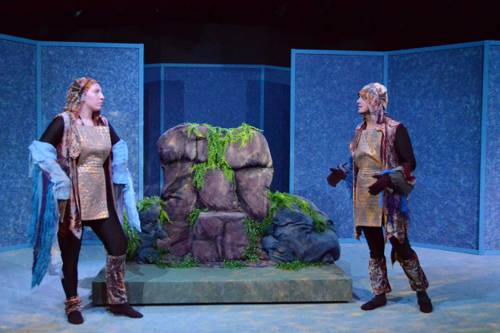
FAQ About The Role of Virtual Theatre in Expanding Performance Art

What is virtual theatre?
Virtual theatre refers to live performance events that are broadcast online using digital technology, allowing audiences to participate from anywhere in the world. These performances can include various forms of art such as drama, dance, opera, and experimental pieces, and are often streamed on platforms designed for virtual interaction.

How does virtual theatre increase accessibility?
Virtual theatre increases accessibility by removing geographical barriers that can prevent people from attending live events. It allows individuals who may be geographically isolated, disabled, or otherwise unable to attend in-person performances to experience live theatre from the comfort of their homes. Additionally, it often offers subtitled or interpreted versions for audiences who are deaf or hard of hearing and provides various interactive features to enhance the viewing experience.

In what ways is virtual theatre reshaping audience engagement with art?
Virtual theatre reshapes audience engagement by allowing viewers to interact directly with performers and other audience members through live chats and social media. It also offers more personalized experiences through customizable viewing options and on-demand replays. These tools create a more immersive and inclusive experience, potentially broadening the demographic profile of traditional theatre audiences.

What technologies are commonly used in virtual theatre productions?
Common technologies used in virtual theatre include streaming platforms like Zoom, YouTube, and dedicated theatre apps which can host live broadcasts. Augmented Reality (AR) and Virtual Reality (VR) are also being explored to create more immersive environments. High-quality camera setups, special effects software, and digital backdrops enrich the visual experience, making it comparable to watching a traditional theatre performance.

How is virtual theatre impacting the traditional theatre industry?
Virtual theatre is both complementing and challenging the traditional theatre industry. It complements by offering new ways to reach audiences, especially during times when in-person gatherings are restricted. It challenges traditional notions of performance by demanding adaptations in staging, rehearsal, and delivery. This shift has sparked innovation and conversation around the future of theatre and its potential hybrid models of presentation.

What are some examples of popular virtual theatre platforms?
Popular virtual theatre platforms include National Theatre at Home, an online service offering recorded performances from London's National Theatre; On The Boards TV, which streams contemporary performances; and StageIt, a platform where artists perform live shows online. These platforms have facilitated audiences to engage with diverse performances globally.

Can virtual theatre replicate the live experience of traditional theatre?
While virtual theatre cannot fully replicate the sensorial experience of traditional live theatre, it offers unique advantages, such as interactive elements and greater accessibility. Some productions incorporate audience feedback in real-time, creating a participatory environment, but the absence of physical presence and communal experience remains a notable difference.

What are the challenges faced by performers in virtual theatre?
Performers in virtual theatre face challenges such as adapting to non-traditional stage environments, ensuring performance quality through a screen, and engaging audiences without physical presence. Technical issues with internet connectivity and equipment can also disrupt performances. Furthermore, the absence of immediate audience feedback, which performers rely on in live settings, can require a shift in performance dynamics.

How do production values in virtual theatre compare to traditional theatre?
Production values in virtual theatre can vary significantly; however, many high-quality virtual productions use professional-grade equipment to offer polished performances. Traditional theatre benefits from elaborate physical settings and acoustics which are challenging to replicate online. However, digital tools allow for unique visual effects and innovative storytelling techniques unavailable on a physical stage.

What role does audience interaction play in virtual theatre?
Audience interaction in virtual theatre plays a critical role in enhancing the viewing experience. Features like live chat, polls, and virtual meet-and-greets allow audiences to feel connected with performers and other viewers. This interaction can lead to greater engagement and investment in the performance, offering a sense of community despite physical distances.

Is virtual theatre a temporary trend or the future of performance art?
While initially spurred by necessity, virtual theatre is likely to remain an integral part of performance art. The flexibility and accessibility it offers are compelling to both producers and audiences, suggesting that hybrid models combining virtual and live elements could become mainstream. The ongoing evolution of technology will also continue to shape its development and integration into the arts.

How do virtual theatre productions enhance creativity?
Virtual theatre enhances creativity by offering artists new opportunities to experiment with digital tools and storytelling techniques. It encourages cross-disciplinary collaboration involving technology, cinema, and interactive media, facilitating innovative narratives and performances. This creative latitude can lead to fresh interpretations of classic works or entirely new productions.

Are virtual theatre performances typically live or pre-recorded?
Virtual theatre performances can be either live or pre-recorded. Live performances offer real-time interaction and contribute to the excitement of a live event, while pre-recorded shows allow for higher production quality and the possibility to edit and refine the performance before release. Many platforms offer both options, catering to different audience preferences.

What types of performances are most commonly seen in virtual theatre?
Virtual theatre encompasses a wide range of performance types including traditional plays, experimental theatre, dance performances, musicals, and operas. Some festivals and companies also offer innovative, hybrid performances that blend various artistic disciplines or involve interactive audience participation, expanding the definition of what theatre can be.

How can virtual theatre benefit educational institutions?
Virtual theatre can benefit educational institutions by providing access to a wider array of performances and workshops, which might otherwise be logistically challenging or expensive to attend. It can be incorporated into curriculums to enhance learning through the study of diverse acting methods, playwriting, and theatre production, supported by direct access to global performances.

What are some ways to enhance the virtual theatre viewing experience?
To enhance the virtual theatre viewing experience, organizations can use interactive features like audience polls and Q&A sessions with performers. Improving video and audio quality, offering multiple camera angles, and providing supplementary content like behind-the-scenes footage or artist interviews can also enrich the viewer's experience.

Can virtual theatre hold the same cultural significance as physical theatre?
Virtual theatre has the potential to hold similar cultural significance as physical theatre by making diverse performance art more widely available. While lacking the tangibility of traditional settings, it can reach wider audiences, contribute to cultural discourse, and preserve cultural heritage through digital archiving. Its democratizing effect could lead to new cultural narratives influencing global artistic practices.

How has the COVID-19 pandemic influenced virtual theatre?
The COVID-19 pandemic significantly accelerated the adoption and development of virtual theatre as live performance venues worldwide were forced to close. This prompted artists and companies to innovate and explore new ways to connect with audiences, leading to an explosion of digital performances and helping establish virtual theatre as an accepted platform for creative expression.

How can artists and producers promote virtual theatre performances?
Artists and producers can promote virtual theatre performances through social media campaigns, collaborations with influencers, and partnerships with online platforms. Engaging trailers, behind-the-scenes content, and exclusive previews can generate interest. Additionally, leveraging digital advertising and SEO techniques for improved visibility can attract wider audiences.
